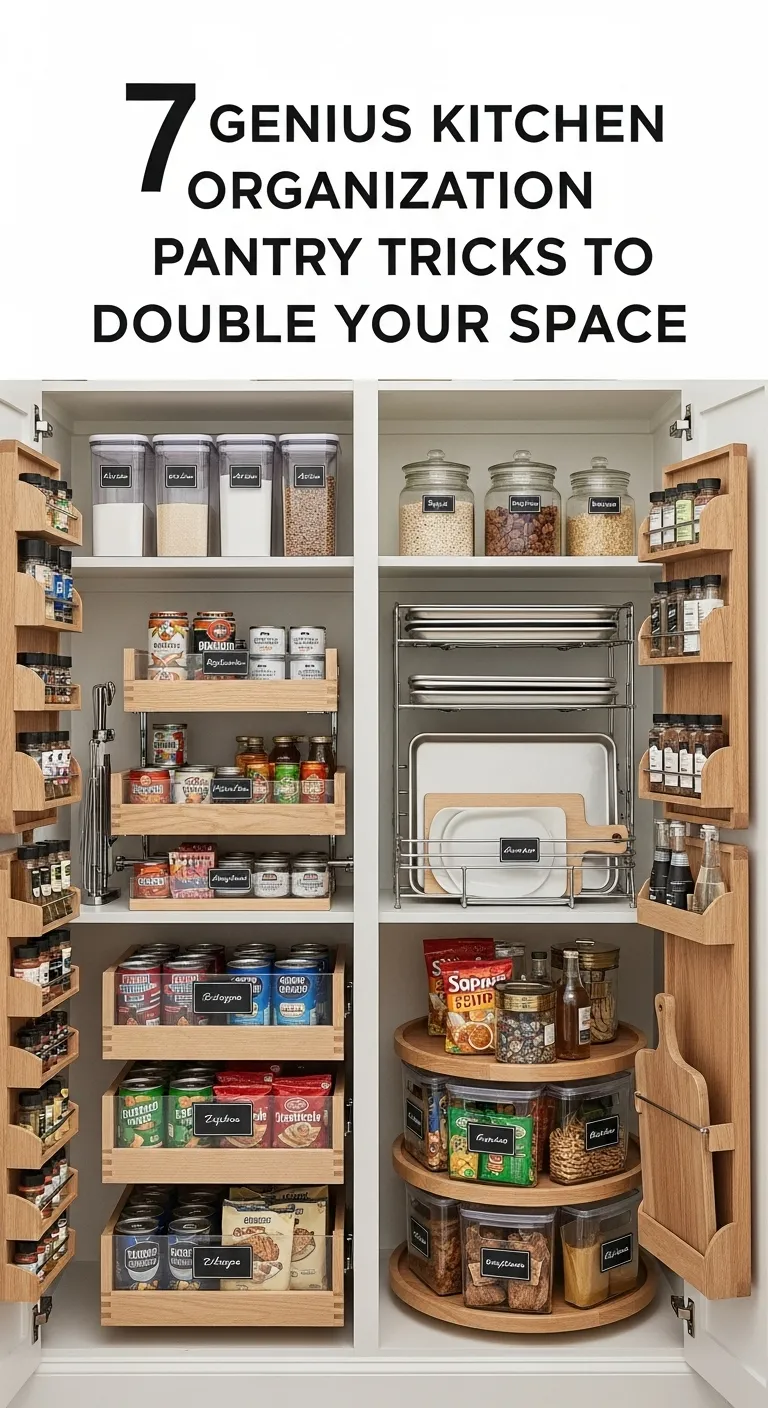Introduction
Imagine that amazing smell. Fresh bread is baking in your oven. It fills every corner of your home. You hear the perfect crust crackle loudly. You slice into a warm, beautiful loaf. Its texture is light and airy. Nothing from a store can ever compare. This is pure satisfaction.
I know sourdough can seem difficult. For years, I felt intimidated by it. It looked like a complex science project. Many home cooks share this feeling. They worry about killing their starter. They fear getting a flat, dense loaf. I have been there.
This guide will change everything for you. I promise to make the process simple. I will break it all down, step-by-step. Think of me as your personal baking coach. This is your clear roadmap to success. You will bake amazing bread with confidence.
Our journey starts with a living starter. I will show you how to create one. It is easier than you think. Then, I will cover the essential tools. I will give you a foolproof recipe for beginners. You will even learn what to do with the “discard.” No waste in my kitchen.
I will share all my best baking tips. I will also debunk common myths about homemade bread. Your journey to baking beautiful sourdough bread at home starts now. Let’s begin.
The Heart of Your Bread: Creating and Nurturing a Sourdough Starter
What is a Sourdough Starter and How Does it Work?
A sourdough starter is a living culture. It is a mix of flour and water. This mixture captures natural yeasts. It also captures good bacteria from the air. This living culture is called a levain. It is what makes your bread rise.
The Science of Wild Yeast and Fermentation Made Simple
Think of your starter like a small pet. It needs regular food and care. The wild yeast eats the sugars in flour. This creates gas bubbles. These bubbles are part of fermentation. They give your bread its airy texture. The bacteria create the classic sour flavor. It’s a beautiful, natural process.
A Simple 7-Day Sourdough Starter Recipe
This is my go-to sourdough starter recipe. It is perfect for sourdough baking for beginners.
You will need:
* A glass jar
* A kitchen scale
* A spatula
* Whole wheat or rye flour
* All-purpose or bread flour
* Water (room temperature)
Instructions:
1. Day 1: Mix 50g whole wheat flour and 50g water in your jar. Cover loosely. Leave it in a warm spot.
2. Day 2: Do nothing. Just let it rest. You might see a few bubbles.
3. Day 3: Discard about half the starter. Add 50g bread flour and 50g water. Mix well.
4. Day 4: Repeat the Day 3 process. Discard half, then feed it again.
5. Day 5: Your starter should be active. You will see more bubbles. Repeat the feeding process.
6. Day 6: It should smell yeasty and tangy. Repeat the feeding process.
7. Day 7: Your starter should double in size after a few hours. It is now ready to use.
How to Know Your Starter is Ready and Alive
Your starter will give you clear signs. Look for these things.
- It has lots of bubbles.
- It doubles in size 4-8 hours after feeding a starter.
- It has a pleasant, sour smell.
- It passes the “float test.” Drop a spoonful into a glass of water. A ready starter will float.
Long-Term Maintenance: Keeping Your Starter Happy
Keep your starter on the counter. Feed it once every day. This is best for frequent baking.
You can also store it in the fridge. Feed it once a week. Let it warm up before you bake. I keep mine in the fridge. It saves time and flour.
Gearing Up: Essential Sourdough Tools and Ingredients
The Must-Have Equipment for Sourdough Success
You do not need a lot of fancy gear. These essential sourdough tools make a big difference.
- Digital Kitchen Scale: Baking is a science. A kitchen scale gives you exact measurements. This is key for the baker’s percentage method.
- Dutch Oven: A heavy pot with a lid. A Dutch oven traps steam. Steam helps your bread rise high. It also creates a crispy crust.
- Banneton Basket: This is a proofing basket. It helps your dough hold its shape. It also gives your loaf a classic spiral pattern.
- Dough Scraper & Bread Lame: A scraper helps you handle sticky dough. A lame is a special blade. You use it for scoring the dough before baking.
Nice-to-Have vs. Budget-Friendly Alternatives
You can start with items you already have. I used a simple bowl for years. It worked just fine.
| Premium Tool | Budget-Friendly Alternative | Notes |
|---|---|---|
| Banneton Basket | A bowl lined with a floured tea towel | Works great for a round loaf shape. |
| Bread Lame | A sharp razor blade or sharp knife | Be very careful. It gets the job done. |
| Dutch Oven | A pizza stone with a large metal bowl | This setup helps trap the steam. |
Choosing Your Flours and Ingredients
The right flour is important. Bread flour has more protein. It creates a chewier crumb structure. All-purpose flour works too. Your bread will just be a bit softer.
I love adding whole grains. A little rye or spelt flour adds amazing flavor. Your water quality matters too. Use filtered water if your tap water is very chlorinated.
The Master Recipe: Your First Beautiful Sourdough Loaf
A Step-by-Step Guide to No-Knead Sourdough Bread for Beginners
This no-knead sourdough bread recipe is my favorite. It is simple and reliable. It is how I started my journey.
- Mix the Dough (Autolyse): In a large bowl, mix 500g bread flour and 350g water. Let it rest for 30 minutes. This helps the flour absorb water.
- Add Starter and Salt: Add 100g of your active starter and 10g of salt. Mix until just combined.
- Bulk Fermentation: Let the dough rise for 4-6 hours. Every 30 minutes, perform a “stretch and fold.” Wet your hands. Gently pull a side of the dough up. Fold it over the center. Do this four times (top, bottom, left, right).
- Shape Your Loaf: Gently pull the dough onto a floured surface. Fold the edges into the middle. Flip it over. Use your hands to pull it toward you. This creates a tight ball.
- The Final Proof: Place the shaped dough in your banneton basket. Cover it. Put it in the fridge overnight. This is called cold proofing. It develops a deep, sour flavor.
- Score and Bake: Preheat your Dutch oven to 475°F (245°C). Carefully place your cold dough inside. Score the top with your lame. Bake with the lid on for 20 minutes. Then, remove the lid. Bake for another 20-25 minutes.
Visual Cues: How to Read Your Dough
Your dough talks to you. You just need to learn its language.
- After bulk fermentation, it should look jiggly. It should be about 30-50% larger. You will see bubbles on the surface.
- A properly proofed dough will spring back slowly. Gently poke it with a finger. An indentation that stays means it is over-proofed.
- Your final artisan bread should have a deep brown crust. This is the secret to baking beautiful sourdough bread at home.
From Good to Great: Advanced Techniques and Troubleshooting
The Art of Scoring: From a Simple Slash to Intricate Designs
Scoring sourdough bread is not just for looks. It controls how your bread expands. It gives the steam a place to escape. Without a score, your loaf might burst open in a weird spot.
Start with a simple slash. Hold your blade at a 30-degree angle. Make one confident cut across the top. This helps create a beautiful “ear.” That is the raised, crispy edge on the crust.
Understanding Baker’s Percentage for Consistent Results
This sounds technical, but it is simple. Baker’s percentage treats flour as 100%. All other ingredients are a percentage of the flour weight. This makes it easy to change your recipe. You can make a bigger loaf. You can also change the hydration easily. It is a great skill for consistent results.
Case Study: Sarah’s Journey from Flat Loaves to Perfect Buns
Problem: Sarah, a busy mom, felt frustrated. Her sourdough loaves were always dense. She loved the idea of baking beautiful sourdough bread at home. She was almost ready to give up.
Solution: She followed two of my baking tips. She strengthened her starter with some rye flour. She also mastered the “stretch and fold” technique.
Process: She fed her starter a mix of bread flour and rye flour. When making her dough, she did four sets of stretch-and-folds. This simple action built strength in her dough.
Outcome: Her next loaf was amazing. It had a great rise. The crumb structure was light and open. She now bakes artisan bread every week. She even uses her starter for sourdough discard recipes. Her family loves her sourdough pizza nights.
FAQs (Frequently Asked Questions)
Why is my sourdough starter not bubbling?
Your starter could be too cold. Try finding a warmer spot for it. Sometimes, a starter just needs more time. Be patient for a few more days. An incorrect flour to water ratio can also be a problem.
How do I get a more sour-tasting sourdough bread?
I love a truly tangy loaf. For more sour homemade bread, use a long, cold proof. Let your dough rest in the fridge for 24 to 48 hours. This develops a deeper flavor. Using some whole grain flour also helps.
Can I bake sourdough bread without a Dutch oven?
Yes, you certainly can. Use a preheated baking stone or steel. Place a shallow pan of hot water on a lower oven rack. This creates the steam your bread needs. This is one of my best baking tips for new bakers.
What should my sourdough starter smell like?
A healthy starter smells yeasty and tangy. It can also have a sweet or vinegary scent. A bad smell, like acetone, means it is very hungry. This means you should feed it more often. Reading your starter is a great kitchen skill.
Conclusion
You now know the secrets. A lively starter is your first step. Good tools make the process easy. Practice is your most important ingredient.
You have everything you need now. This guide is your map. You are ready for baking beautiful sourdough bread at home. Your kitchen will smell amazing.
Your journey is just beginning. Pick one tip from this guide. Maybe start your starter this weekend. Or try a new scoring pattern.
Share your results in the comments. I would love to see your bread. I can’t wait to see what you create. Let’s build our kitchen skills together.
Enjoy the magic of homemade bread.


